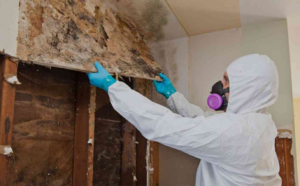Whether you want to add more storage space or freshen up the look, there are many ways to bring your kitchen into the 21st century.
Choose materials that align with your design aesthetic while balancing functionality and budget. Consider upgrading to smart or energy-efficient appliances, for example. And remember to obtain any necessary permits for structural changes or rerouting of plumbing. Contact Kitchen Remodeling Temecula now!

A well-executed kitchen remodel boosts resale value and makes the home more comfortable and appealing. However, it can also get costly. To keep costs in check, homeowners can use a few strategies.
Work with a professional to price out all the project components, including materials, labor, and other expenses. Make a list of must-haves and want-to-haves, then prioritize. You should ideally only spend money on items that make sense in terms of functionality and style, such as replacing an old and inefficient stove or upgrading stained flooring.
Labor and materials are the largest expense categories. The cost of installing new cabinets, for example, can consume up to 40 percent of the overall budget. The cost of plumbing fixtures and hardware can also add up. For instance, copper pipes typically run $2 to $8 per linear foot, while CPVC piping is less expensive at $0.50 to $1 per linear foot.
Keeping a spreadsheet of all expenses can help you manage costs and avoid overspending. You should also make sure to track all bills and receipts throughout the remodeling process. You can then compare these expenses to your budget on a regular basis and adjust accordingly.
It’s a good idea to set aside 20% of the total remodel costs for unanticipated expenses. This can include unexpected repairs, such as fixing drywall or water damage. It can also cover items that weren’t included in the initial estimate, like running electricity or water lines to a different area of the kitchen.
Layout
When it comes to kitchen remodeling, the layout is everything. A well-designed layout makes meal prep and entertaining more efficient by establishing a work flow between key areas like the stove, sink, and refrigerator. This “kitchen triangle” minimizes steps and maximizes efficiency.
A logical layout also makes it easy to find things. Consider storing everyday cooking items near the kitchen table, such as plastic containers, foil, and wrapping materials. Keep cookware and utensils in easy reach of the dishwasher, or put pots, pans, and dishes in the lower cabinetry to save time on unloading. Adding more storage solutions, such as pop-up mixer shelves in cabinets or custom wine racks, makes your kitchen more functional and attractive.
Another important consideration is the kitchen’s relationship to other spaces in your home. For example, a kitchen remodel can include replacing or enlarging a window, opening up walls, and creating an open floor plan. These changes can make the space feel larger and more connected to other living areas, which can add to a home’s value.
Before starting a remodel, consult with a Kowalske project manager to understand hidden costs and potential issues with structural changes. They can help you define your vision and budget, making the process easier for everyone involved. A well-planned remodel helps to prevent unforeseen expenses and ensures the results are exactly what you want. And a well-planned remodel also makes for a more enjoyable experience for you, your family, and friends.
Appliances
When remodeling your kitchen, you’ll likely be looking for new appliances to replace those that are outdated or worn out. You’ll want to choose from a variety of options when selecting your new refrigerator, cooking range and dishwasher, with considerations such as style, energy efficiency, size and capacity, warranty, and more.
You may also be adding or replacing small appliances such as a microwave oven, coffee maker, or warming drawer. These add-ons can give your kitchen more functionality or make it look more attractive.
Lighting is another common feature that you’ll likely want to update during your kitchen remodel. This typically involves installing recessed lights and pendants to illuminate your space. It can also include adding task lighting to illuminate work areas, like a stovetop or sink. This lighting often includes dimmers so you can control the amount of light you need.
Having the right materials to ensure you get the finished result you envision is critical to your success. A professional can help you determine which materials will fit your vision and budget, including the pros and cons of different types of flooring, backsplashes, paint and other finishes. They can also recommend different cabinetry styles and materials to meet your needs, including custom cabinets that allow you to store more items with ease.
Cabinetry
Your cabinets can make or break the look of your kitchen, so a thorough evaluation is necessary. If your cabinet interiors are in good condition and the layout works, a refresh may be in order with new paint colors and hardware. However, if your storage is inadequate or the cabinets are worn out, it’s time for a remodel.
A full kitchen renovation requires a lot of plumbing work as well, including rerouting the water supply and drain lines to match the new layout. Even if you’re keeping your sink, refrigerator and dishwasher in the same places, this is an opportunity to replace old galvanized pipes with PEX.
High-quality cabinets come in a range of styles and price points. For example, Plain English, which has garnered nearly 200,000 Instagram followers with its swoon-worthy hand-painted cabinetry, offers a variety of bespoke options for traditionalists. Meanwhile, Siteline offers budget-friendly frameless options with a number of door styles and finishes to suit any whim.
When shopping for cabinets, be sure to visit showrooms and big-box stores to view all the options available to you, as the choices can be daunting. It’s also a good idea to talk to friends and colleagues about the pros they’ve worked with, as well as checking online reviews for reputable contractors. Choosing a one-stop general contractor can help streamline the kitchen remodeling process as they’ll be responsible for hiring subcontractors, managing the job and providing accurate estimates.
Flooring
Choosing the right flooring for your kitchen is one of the most important decisions to make during a remodel. Several factors need to be considered, including durability, cost and style. A knowledgeable professional will be able to help you select the best flooring for your space.
Tile is a popular option for kitchen floors because of its high durability, water and stain resistance, and versatile design options. It can be expensive, however, especially if you choose rare or exotic types of tiles.
Vinyl is another budget-friendly option that offers a wide range of styles, and can mimic the look of wood or tile. It is also easy to install, and can be laid over existing flooring with little disruption. The cheapest type of vinyl tends to be sheet vinyl, while the most affordable option is luxury vinyl planks, which click together to form a floating floor.
Hardwood is another traditional and classic choice that has been a popular kitchen flooring option for decades. It is warm underfoot, holds heat well, and can be sanded and refinished to restore its appearance as needed. You can find eco-friendly hardwood options, as well, such as reclaimed or bamboo, that reduce the need for new trees to be cut down.
Lighting
Lighting is crucial to a kitchen’s overall feel and function. It should have the right mix of ambient (overall) lighting to illuminate the space, task lighting for specific work areas like islands or countertops, mood lighting to create atmosphere and accent lighting to draw attention to art or special collections. Layered lighting is especially important in multipurpose spaces that open to other rooms, where light needs to adapt to a variety of uses and occasions.
For the most versatility, use dimmable lights so that you can control the amount of brightness and color temperature. Cooler temperatures are ideal for workspaces, while warmer colors lend a more intimate feel to dining areas. For the most impact, install recessed ceiling or under-cabinet lighting on a separate circuit from other kitchen appliances and fixtures to avoid overloading or shorting out those systems.
For remodels that include a structural change, it’s also wise to consult with engineers to ensure your changes don’t affect the integrity of your home. In addition, plumbing and electrical tasks require professional expertise, so a licensed contractor should handle these duties. If you’re removing walls or creating an open concept, it’s also helpful to have a temporary kitchen and dining area for the duration of your project. A small table, sink, microwave, toaster oven and hot plate or a portable stove will help you live comfortably during the construction period.







